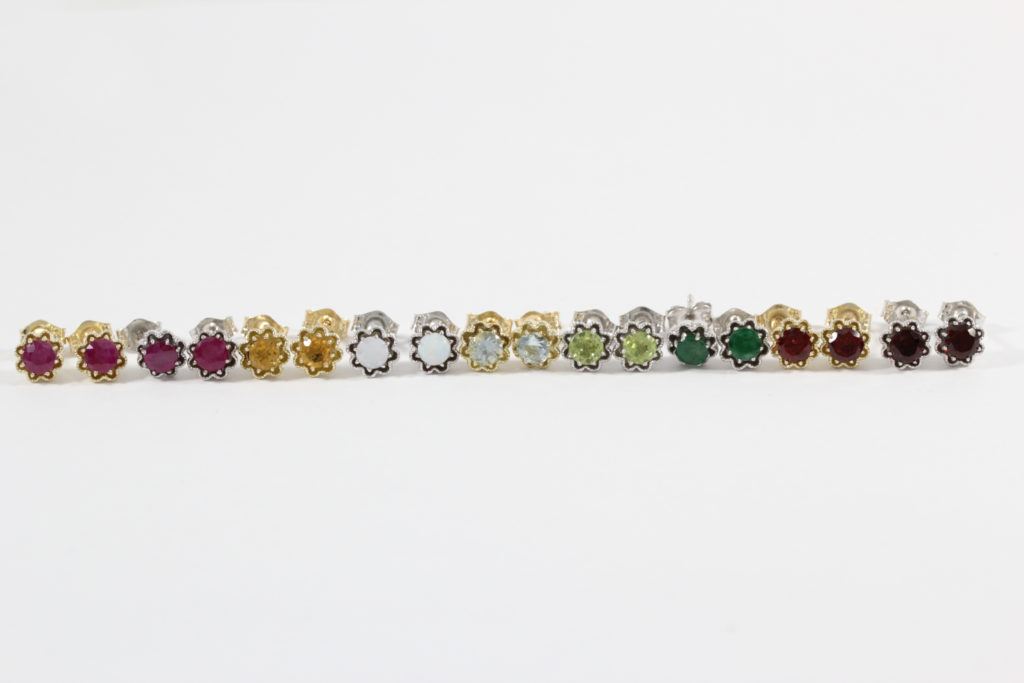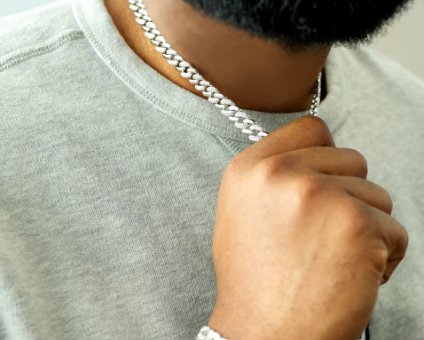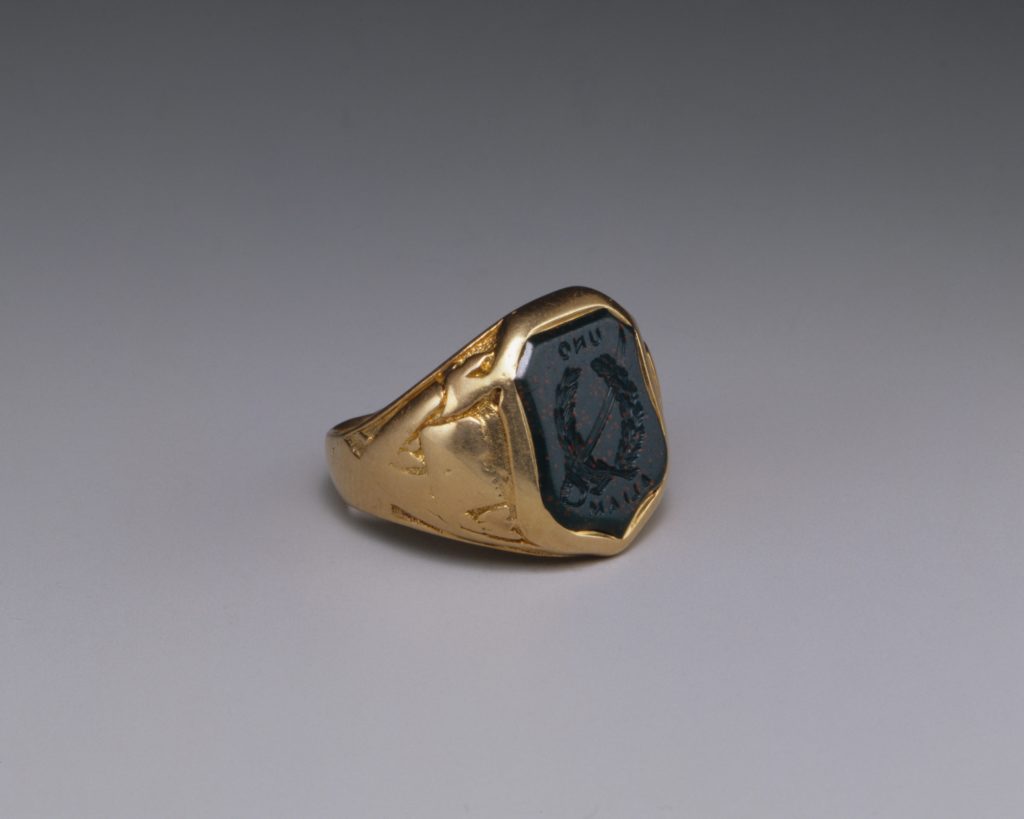Colored Gemstone Jewelry Repair: What You Need to Know
Written by Annabelle
September 4, 2019

You're at the jeweler's, and instead of getting your ring resized they shake their head and hand back your ring, telling you that because of the colored stone they won't work on it. But why?
Certain stones can be difficult for a jeweler to work with, due to its properties. Learn more about colored gemstone jewelry repair here.
What Happens During Jewelry Repair Work?
Normally, when a jeweler takes in an item for repair, they will have to use either heat for the soldering process or water for cleaning at some point. For most jewelry, this exposure to heat and water is fine. After all, the jeweler is well-experienced with standard jewelry metals and their reactions to heat, allowing them to control the repair process. Diamond, the most popular gemstone, lives up to its reputation for durability as they can be worked on with little need for caution.
Things get complicated, however, with colored gemstone jewelry. Many colored stones are fragile in composition, or have gone through treatment that will be affected by the heat and water during repair. In order to keep your jewelry in good condition when sending it out for repair, here's what you need to know.
Settings Can Affect Your Colored Gemstone Jewelry Repair
The type of setting your colored stones are set in will affect the repair process. Normally, to work on pieces containing fragile stones, the jeweler will carefully unset the stone and set it to the side to reset it after any soldering or heat-related work is done. However, that's not possible with certain settings, which means the jeweler will have to risk damaging the stones in order to perform the repair. Channel-set stones and bezel-set stones are usually the main culprits of this particular complication; the structure of these settings is hard to tamper with and stones cannot be removed without breaking them.
In addition, the metal type can also affect the repair process. Silver, for instance, is the fastest conductor of heat out of the jewelry metals. This poses a threat to any stone that cannot be removed from its setting, as the metal will heat up very quickly and possibly burn or crack the gem. The faster the heat travels, the less time the jeweler has to work on the piece without damaging the gem. It's a race that's dependent on the piece's construction and the jeweler's level of skill.
Which Colored Gemstones Need Special Care?
Not every colored gemstone requires special care when repair work is performed- rubies and sapphires, for instance, are fairly hard and hold up quite well most of the time. There are certain gemstones, however, that need special attention because of how fragile and damage-prone they are. Here's a quick list of the top six stones to watch out for:
- Opal: Opals are made from hydrated silica, and because of this chemical structure they are notorious for being extremely finicky. Changes in temperature can cause opal to fracture, and there are varying reports on the behavior of different types of opals when exposed to heat and water. For instance, Ethiopian welo opal can either become entirely transparent or opaque when exposed to water, changing its look until it dries out. As a result, most opals are unset before any repair work such as sizing is performed, and it is never placed into a steamer or ultrasonic cleaner- the high temperature of the steam cleaner and the water in the ultrasonic tank may cause the opal to break.

This opal ring was exposed to water, turning it translucent. After a few hours, it dried up and returned to its original color.
- Emerald: Emeralds are naturally full of fractures and inclusions, which visibly impact the stone. As a result, it's an industry standard to improve the clarity of emeralds by using oils, resins, and polymers to fill the fractures. However, those fillers can melt out of the stone when exposed to high heat, and the vibrations of the ultrasonic cleaner will shake and aggravate fractures within the stone. As a result, jewelers unset emeralds before repair and clean by hand to avoid issues with the brittle stone.

This emerald ring came in with a fracture at the corner near the prong.
- Turquoise: This opaque gem is wildly popular, especially in Native American jewelry. Because of its porous texture, turquoise can chip or break easily. When subject to high heat, turquoise can change color- most noticeably, the variant of turquoise from Iran will turn green when heated. Most commercial turquoise is treated with dye or oiling, which may be affected if exposed to steam or ultrasonic cleaning. Since a lot of turquoise is set in silver, it can be very tricky working with such pieces to avoid damage to the stone.

These turquoise rings were very difficult to resize, because the stones could not be removed.
- Pearl: One of the three organic gems, pearl isn't the same as an emerald or a ruby since it isn't actually a rock. The pearl is an accumulation of calcium carbonate within a mollusk such as an oyster when an irritant finds its way into the shell. Because of its organic composition, a pearl is very fragile. The surface is prone to scratches, and it burns quickly if subject to heat. You may have heard of the famous Cleopatra dissolving a pearl into vinegar- these soft orbs are extremely vulnerable to any kind of acid and will immediately take damage.
In the industry, many pearls are bleached with hydrogen peroxide to improve the color. This makes them brittle, and they need to be kept in a safe environment that isn't too dry or hot, as they will lose hydration and change color. Pearls should not be washed in steam or ultrasonic cleaners- not only does this damage the pearl, but it may loosen the setting, as many pearls are glue-set.
This ring is set with a Tahitian gray pearl.
- Coral: Taken from the marine organism of the same name, this organic material is known for its beautiful opaque colors. However, given that it is the skeleton of a living creature, coral is very sensitive to heat and chemicals, such as chlorine or perfumes. Commercial coral is often dyed, bleached, or filled with wax. All of these treatments can be affected if the coral is placed in an ultrasonic cleaner or steam cleaned, potentially damaging the stone or drastically changing its appearance.

This coral and opal ring was sent in for resizing.
- Amber: The fossilized tree sap that is so popular for jewelry has its own detracting qualities. It's extremely flammable, and darkens after long exposure to light. Most of the time, amber must be unset before repair work is performed. Amber set in silver is especially dangerous to work with, as the heat from a jeweler's torch can travel very quickly through the metal and burn the stone. It should also be noted that dye is commonly used to enhance the look of commercial amber, and can react oddly to heat or water exposure, which may change the look of the stone.

This large silver statement ring has a slab of dark amber across the top.
How to Make Sure Your Colored Gemstone Jewelry Stays Safe During Repair
Now that you're well-informed on how to take care of most fragile colored gemstones, here are a few steps to ensure that your colored gemstone jewelry stays intact whenever you take it in for repair or maintenance.
- Do your research: Always ask questions! When finding a jeweler, you should ask about their experience working with the particular gemstone that's in your jewelry. For instance, opals are very tricky and not every jeweler knows how to deal with their unpredictable nature. At Quick Jewelry Repairs, we like to provide customers with photo samples of similar items we've worked on, to let them know that we can do the job in regards to that gemstone.

An opal ring we resized for a customer.
- Ask for unsetting: The more informed you sound, the better the repair. If you're proactive and ask if unsetting the stone is possible, chances are the jeweler will agree with your request and do so to preserve the stone. Never assume that a jeweler will unset by default! Jewelers vary in experience and skill, and you don't want to run the risk of having someone scorch the side of your favorite pearl pendant.
- Ask to check for inclusions and fractures before unsetting: This should be a standard industry procedure for colored gemstone jewelry, but not every jeweler will perform this. Fractures and inclusions in a stone can compromise the structural integrity of the gem, leaving it prone to cracking when unsetting or setting. Before the jeweler goes about prying your stone out of the setting, ask them to do an inspection. While it's not a 100% guarantee that the stone will be safe during the removal process (as jewelry can be unpredictable) it's definitely a good preventative measure.

This ruby ring has noticeable inclusions that make it very distinctive.
- Ask if they take pictures when intaking: You frequently hear horror stories on the Internet about sending a stone to the jeweler and receiving a completely different gem two weeks later. At Quick Jewelry Repairs, we make sure to take photos of items before they move to work as documentation for ourselves and for the customer. If the jeweler you work with doesn't do this, you should take pictures on your own, or even get an appraisal in the event that the stone is damaged or swapped to file for insurance.
- Ensure that there's clear communication: A good jeweler should always let you know about any potential risks or accidental damage that occurs during work. Make sure to emphasize this and double-check that they're open to communicating with you throughout the repair before you leave your jewelry with them. To avoid any miscommunication, we like to email our customers about any potential concerns or issues before work is started. For instance, we received a ring that was channel-set with rubies. Due to the setting, we couldn't remove the rubies, and we had to size the ring up. We contacted our client to let her know that it would be risky to size the ring without removing the stones, and waited for her written confirmation before we proceeded with work.
You're prepared to send your colored gemstone jewelry out for repair! If you have a piece that you'd like to get fixed, contact us here!


